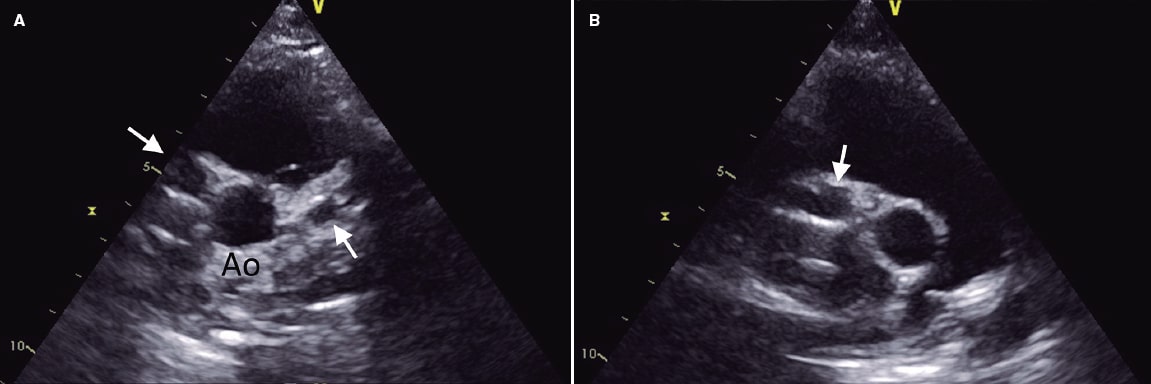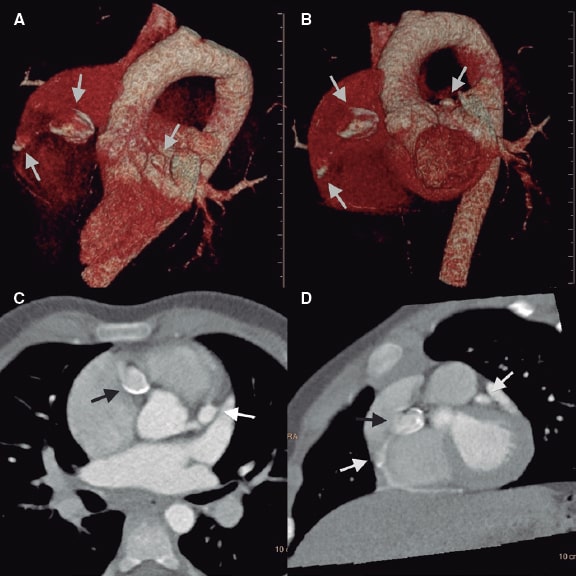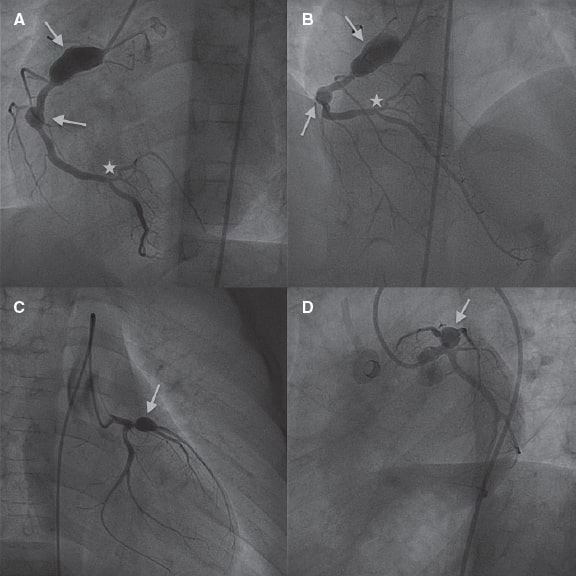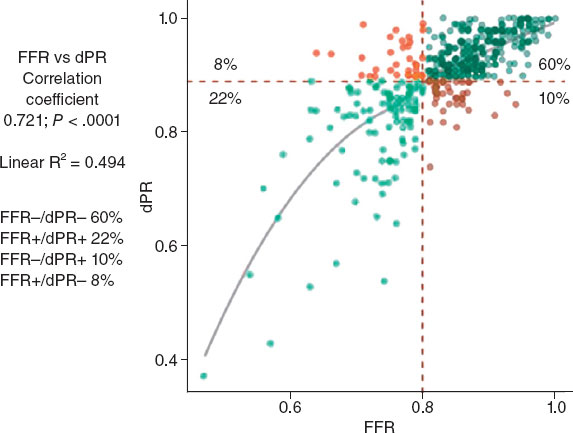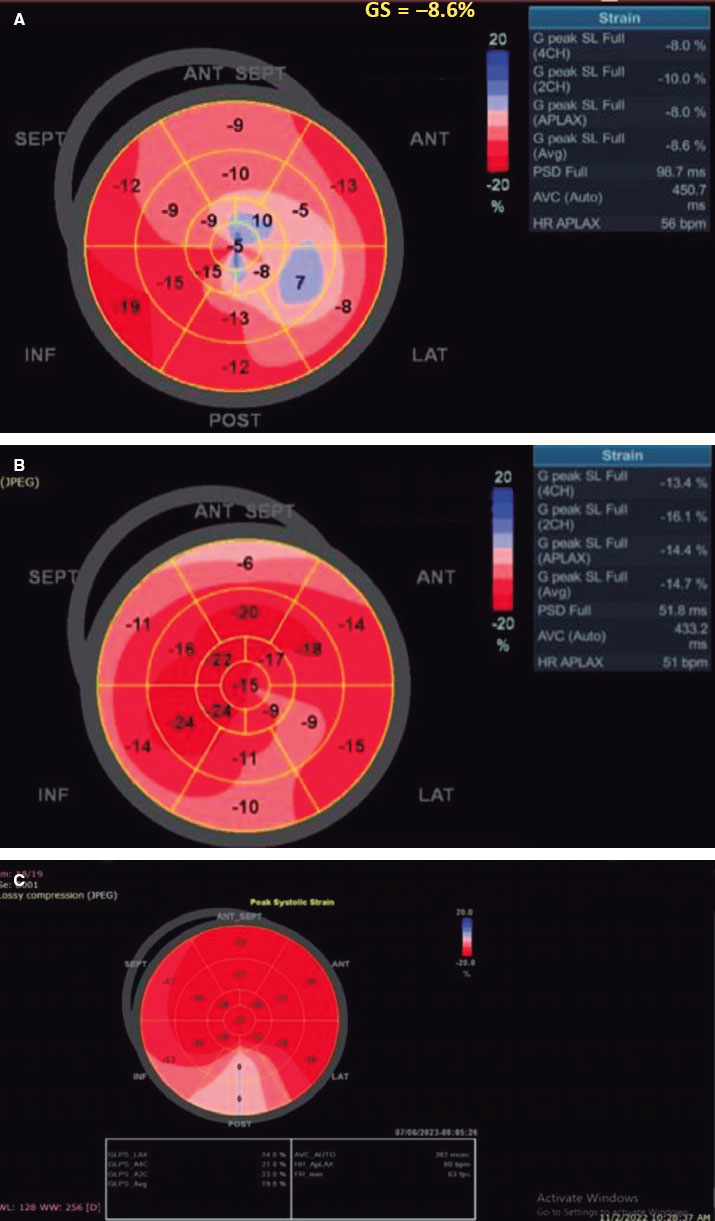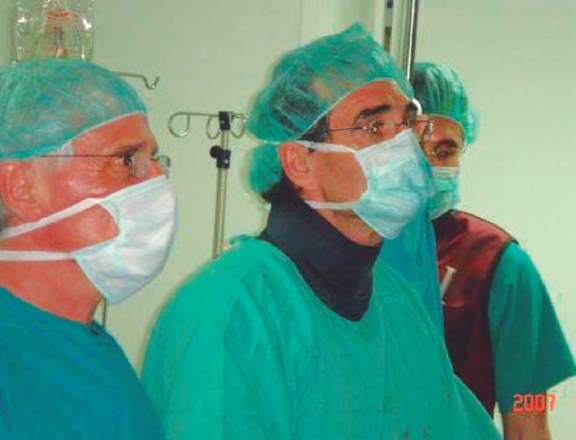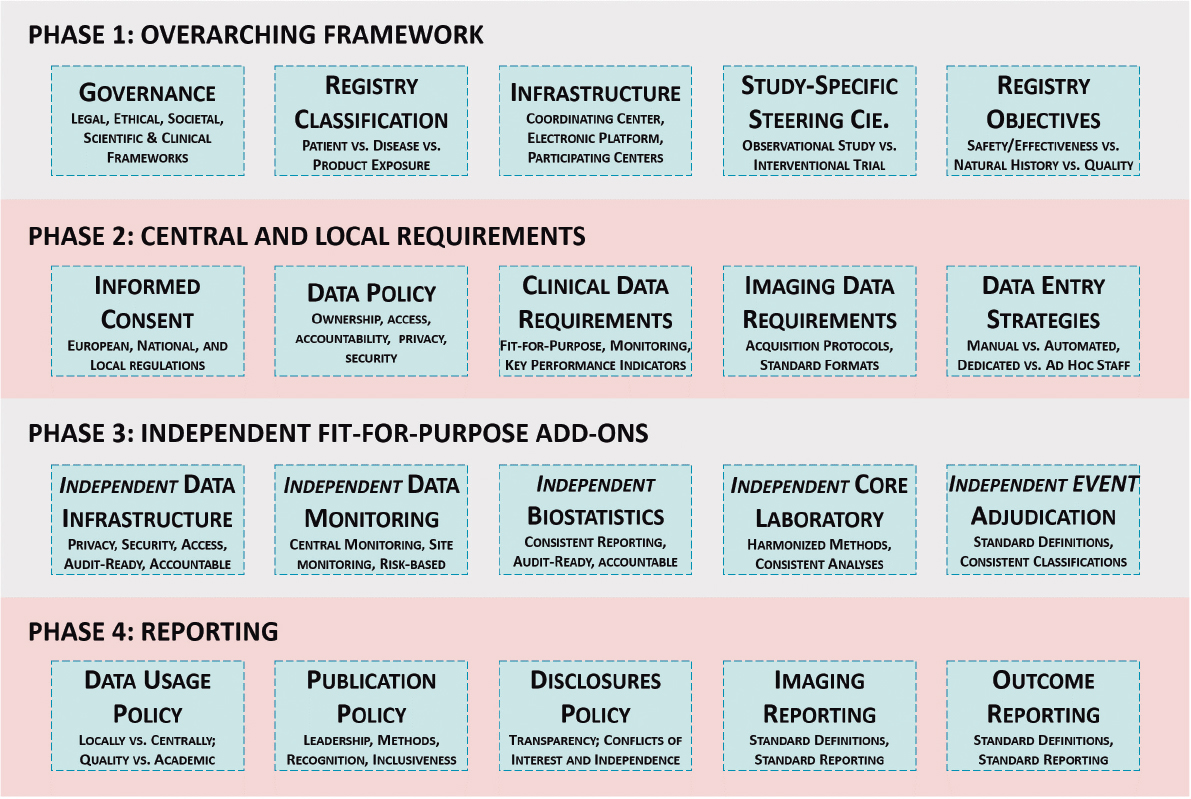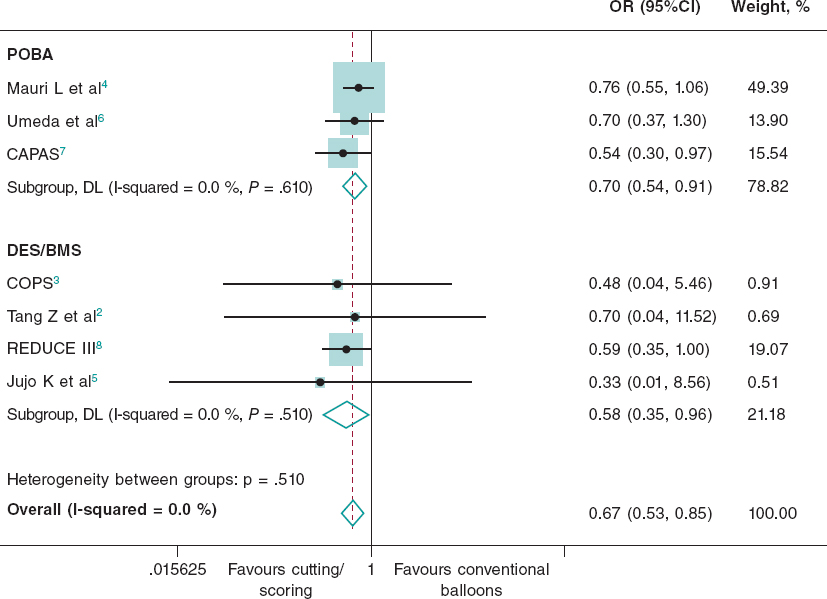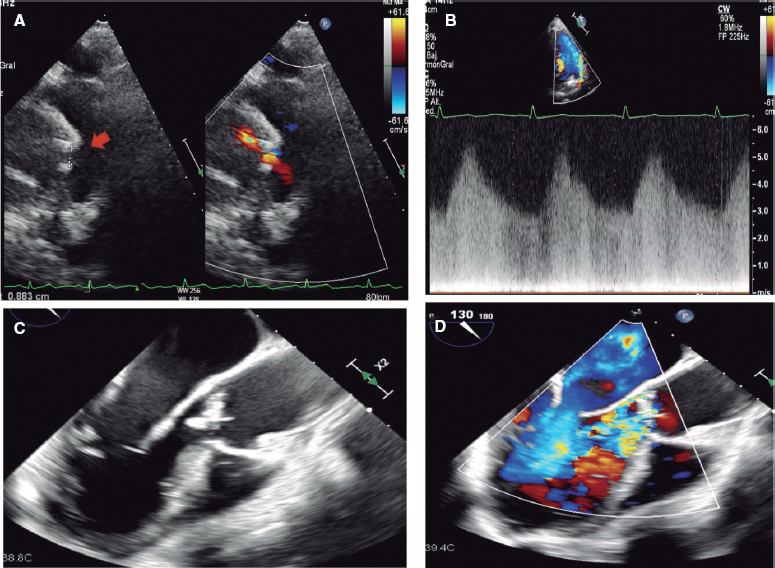The association of Kawasaki disease with the formation of aneurysms and coronary stenoses is well established, especially in gammaglobulinnaïve patients. This is the case of a female patient monitored due to patent ductus arteriosus. The control echocardiography performed at the age of 2 years revealed the presence of giant coronary aneurysms in both coronary arteries. The coronary computed tomography angiography (CCTA) and following cardiac catheterization performed confirmed this finding. The patient’s past medical history revealed she had been admitted at the age of 9 months due to fever compatible with pyelonephritis with good response to antibiotic therapy that could have been consistent with incomplete Kawasaki disease due to fever and further desquamation. Antiplatelet and anticoagulant therapies were administered that, to this date, have been maintained indefinitely.
When the patient was 6 years old, another echocardiography (figure 1: short axis, Ao, aorta, 1A: right arrow: left coronary aneurysm; left arrow: right coronary aneurysm; arrow 1B: right coronary aneurysm), CCTA (figure 2, right arrows: left coronary aneurysm; left arrows: right coronary aneurysm), and cardiac catheterization were performed that revealed the presence of 2 17 mm x 8.8 mm and 7.3 mm × 5.3 mm calcified aneurysms in the right coronary artery (figure 3A,B and videos 1 and 2 of the supplementary data) plus another 8.3 mm × 6.7 mm aneurysm in the left anterior descending coronary artery (figure 3C,D and videos 3 and 4 of the supplementary data) with mild stenosis in the posterior descending artery (figure 3A,B, asterisk). The clinical course revealed no significant size changes compared to diagnosis or complications.
Figure 1.
Figure 2.
Figure 3.
Since the patient had a high cardiovascular risk, after the last cardiac catheterization, treatment with statins was added according to the clinical practice guidelines on the management of Kawasaki disease published by the American Heart Association
To this date, the patient remains asymptomatic, and no complications associated with her disease or treatment have been reported.
The patient’s mother gave her written informed consent to be able to publish this case.
FUNDING
None whatsoever.
AUTHORS’ CONTRIBUTIONS
All authors participated in the drafting of this manuscript, read, and approved its final version.
CONFLICTS OF INTEREST
None reported.
SUPPLEMENTARY DATA
Vídeo 1. Marimón Blanch C. DOI: 10.24875/RECICE.M22000272
Vídeo 2. Marimón Blanch C. DOI: 10.24875/RECICE.M22000272
Vídeo 3. Marimón Blanch C. DOI: 10.24875/RECICE.M22000272
Vídeo 4. Marimón Blanch C. DOI: 10.24875/RECICE.M22000272


